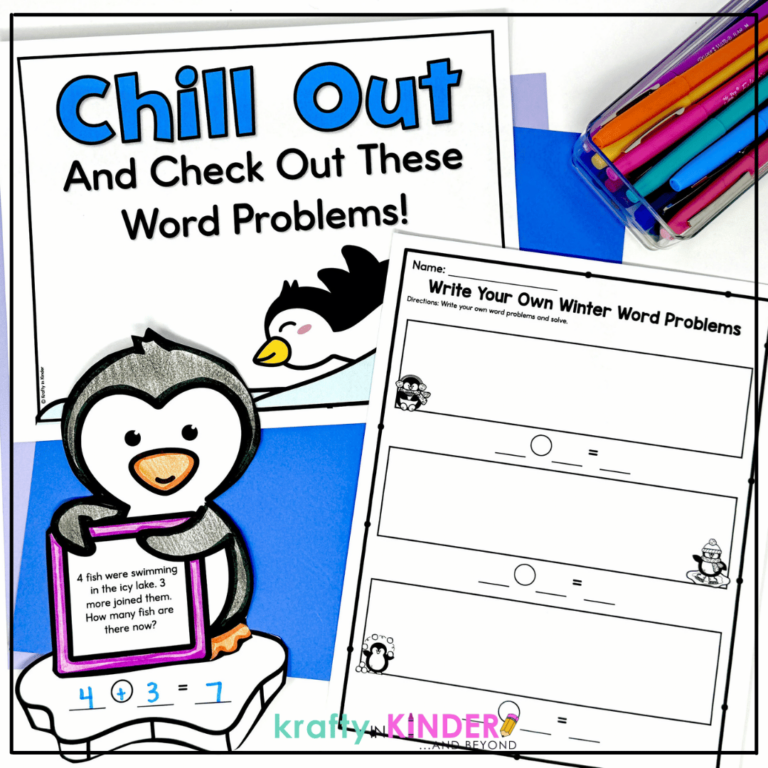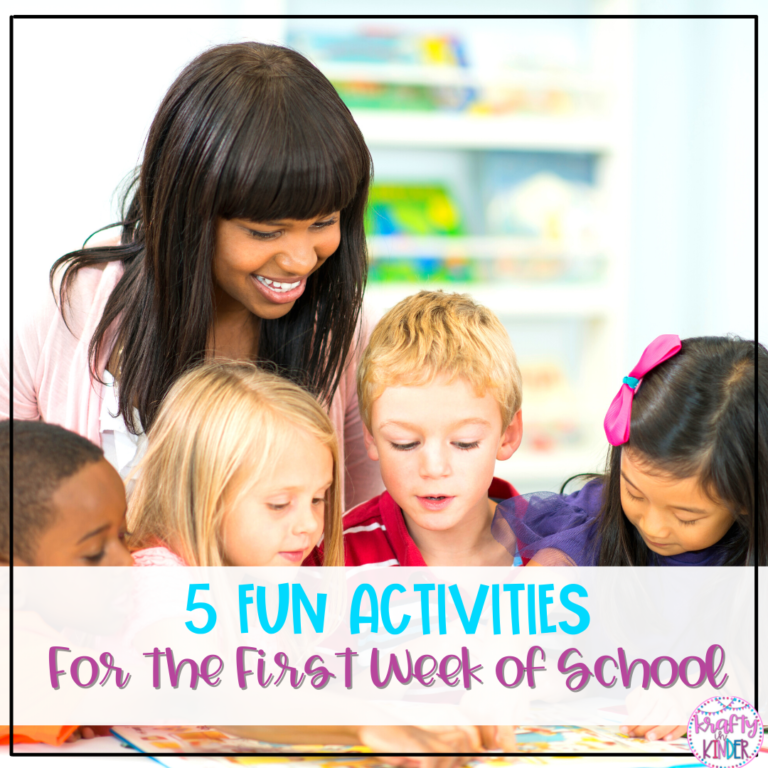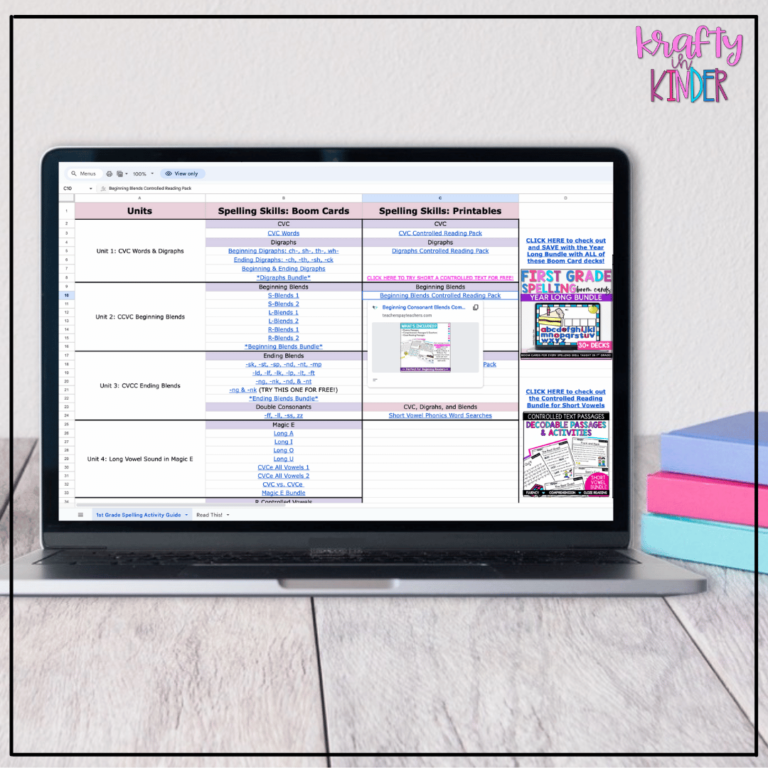Teaching Expectations and Rules at the Beginning of the School Year
Teaching expectations and rules is an absolute must at the beginning of the school year in any classroom. I would argue that this is even more important when it comes to primary learners though! Many students in kindergarten and first grade might be having their first-ever school experience. This means it’s up to us to set the tone, teach them the ropes, and start the year off on the right foot! The good news is that teaching rules and expectations doesn’t have to be complicated or boring. In fact, with my tried and true method, it’s fun and easy for everyone!
The Importance of Teaching Expectations During Back-to-School Time

I think we can all agree that back-to-school is a crazy time in the classroom. A fresh new crop of students means you’ll need to focus on beginning a new classroom curriculum, nailing down an effective schedule, and most importantly teaching rules and expectations. Teaching expectations and rules at the beginning of the school year is crucial because it will dictate how your room runs. After all, if students don’t know the rules and expectations of the classroom, how can they be expected to behave in an orderly way?
By taking the time to ensure that students understand the classroom rules and expectations, you’ll help start the year off on the right foot. In my first few years of teaching, I was hesitant to focus on rules and expectations right off the bat. I was worried that students would think I was too “firm” or not fun. Boy was this a mistake. Teaching rules and expectations helps kiddos see the boundaries. Boundaries help students feel safe and supported. Children who feel safe tend to have better behavior. Now, as a parent, I understand this even better but it definitely applies in the classroom as well! So, all this to say, don’t shy away from teaching expectations during that first week of school. It will have a BIG impact on your whole year!
Make Teaching Expectations & Rules Fun
So, the million-dollar question… How do we make teaching expectations and rules fun? As a primary teacher, I am no stranger to behavior management systems. I feel as though I have tried it all! I was forever in search of something that made it simple to convey classroom expectations and rules without boring my students to tears. It’s also always been a priority of mine to focus on the positive when it comes to classroom rules. What I mean by this is that I wanted to put my kids in a place of autonomy to make better choices rather than “punishing” them for less-than-ideal ones.
Over the years I used what I learned in my classroom to create a 3-stem behavior management system that effectively taught expectations and allowed students to think about positive and negative choices. I think this is key. Allowing students to think about your expectations and apply them to different scenarios is super helpful in the long run. They learn to slow down, think about their actions, and consider if it’s a strong choice or a weak choice.
Now, don’t forget – we’re talking about primary learners here. There are bound to be slip-ups from time to time. This is expected and normal. But the key is that when you take the time to teach expectations, it makes it a lot easier to address them, make changes, and move forward! This is the positive action I am seeking in my room. If you are too, take a look at the system I use to teach rules and expectations.
1. Use a Great Introduction

Step one in my behavior management system is to start with a great introduction. This is perfect for the beginning of the school year when you meet your new students. I like to use this intro within the first 2 days in the classroom. You can feel out your school and see when it is appropriate to use in your room, but in my experience, the sooner you cover this topic, the better!
To begin, I define two categories of behavior for my students. In my room, we use the terms strong choices and weak choices. Strong choices are the “good behaviors” that we expect our students to use consistently. Weak choices are those less-than-ideal behaviors that we’re looking to avoid. I chose this language to show my students that they are in charge of their behavior. These words help motivate them to be “strong” and choose behaviors and actions that reflect this. I prefer this wording to “good and bad” since that feels less like something that can be controlled.
Whole Group Teaching

To introduce these terms, I like to use a Google Slides presentation. Included in the resource I use are slides with definitions as well as examples. The slides even include reasons why making strong choices at school is important. I like to walk through these slides slowly, talking in-depth and asking for student input as we go. This is a great community-building activity!
After this, we move onto slides with movable pieces that allow us to sort choices by strong or weak actions. We work through this together, pausing to make note of what makes each choice strong or weak. I like to make this activity as positive as possible and state clearly that when we make strong choices, everyone in the room benefits. Rather than making this feel like a lecture where I tell the kids they must be “good” I aim to help them feel empowered to do the right thing all on their own. The colorful, interactive slides make this fun and easy to do!
2. Student Practice Activities

After our group presentation, I like to allow the students a chance to practice this on their own. This is where the printable version of this activity comes in handy! Inside this resource, there are both large sorting cards as well as worksheets.
The large cards are perfect for laminating and using as a center activity with a pocket chart. This is one of my centers for the first week of school. I like to leave this out for a while to encourage students to sort the cards into the correct category. It helps get those wheels turning about proper school behavior positively! There’s also a black-and-white version of the large cards that you can use to make a large anchor chart with your whole group. I like to pull this out to complete with my kids anytime they need a refresher on strong and weak choices!
Finally, the printable worksheets are perfect for a follow-up activity to the large sorting game. Everyone gets a sorting worksheet that allows them to cut and paste choices into the correct category. As a bonus, students also get practice with using school supplies like scissors and glue. This is another essential thing to practice at the beginning of the year! These worksheets come in 3 options with 10, 12, and 16 behaviors. This means you can use this activity more than once to help cement those expectations immediately!
3. Review Expectations

As with anything taught in the primary classroom, practice, and review are essential components of success. This is certainly true when it comes to teaching expectations. For this reason, I also made a Boom Card version of these activities to make continued practice easy. Boom Cards are a go-to center activity in my room since they facilitate independence, integrate technology, and are fun for students! I love that as my kids work through each of the cards in the deck, they are having fun dragging and dropping behaviors into the correct categories.
I usually have them work in pairs on these Boom Card activities at the beginning of the year. This way they can learn to use the device with a buddy, and talk about strong and weak choices together. These cards are also self-correcting as well. This means they will know right away if they need to look again and reconsider their answer. Another key to success early on! There are 30 Boom Cards in this deck, so you’ll have plenty of variety to keep your students engaged throughout the first few weeks of school as they practice these skills.
Teaching Expectations Made Simple
So what do you think of this 3-step system, friend? Pretty cool right?! I love using the combination of these activities in my classroom. It makes a huge impact at the beginning of the year and any other time we need a refresher, like after winter break. If you’d like a sneak peek at these activities, enter your email below to be sent a free sample Boom Card activity for teaching expectations. This is a great way to get a closer look and decide if these activities would be right for your classroom!
In my experience, these activities for teaching expectations work best when used together. Because of this, I decided to bundle them all together for easy planning! Inside the Behavior Expectations Bundle, you’ll get the Google Slides presentation, the printable cards and worksheets, as well as the Boom Cards. This tried and true system makes it simple and easy to facilitate teaching expectations during those first couple of weeks. Best of all, it puts your students in the driver’s seat and empowers them to make strong choices! I love that these activities are fun for students and help them understand the importance of making positive choices in the classroom. Be sure to check out the bundle if you’re looking for a way to help your students understand these concepts in a fun way!
Save These Ideas for Teaching Expectations
Teaching expectations during back to school time can be fun and easy! Pin this post on Pinterest to come back to when you need some inspiration.







